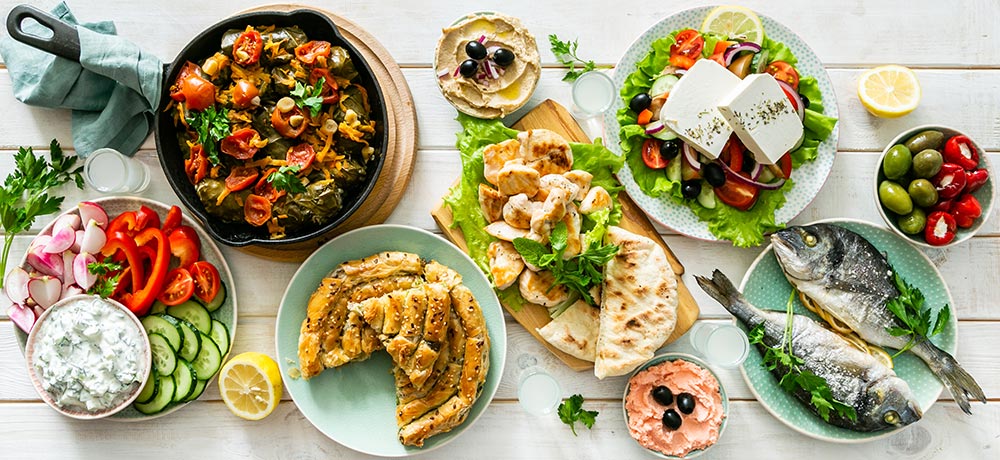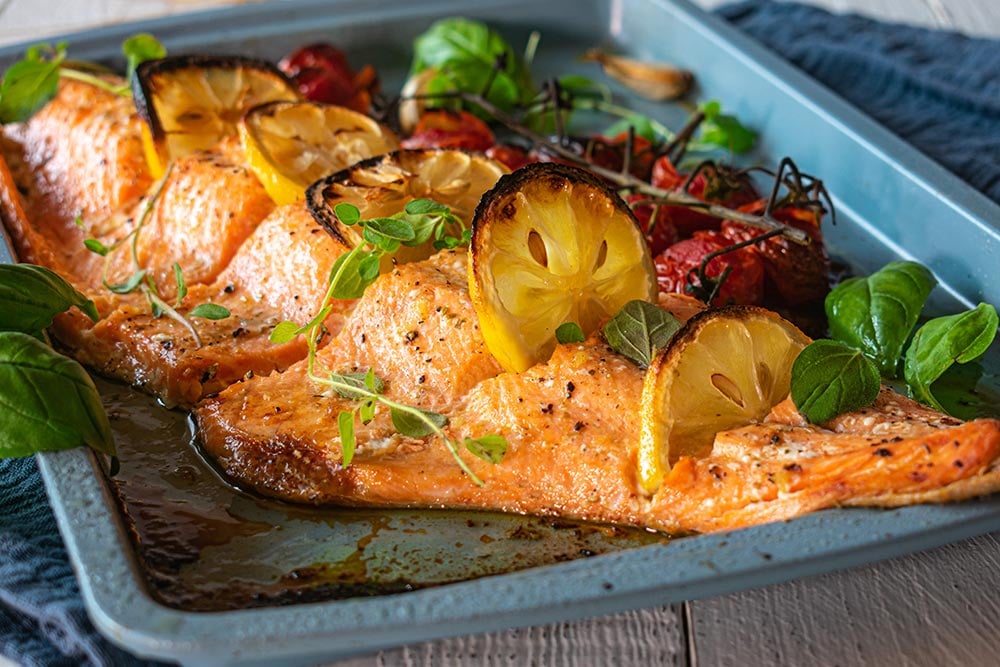
By Tim Scallon, MS RDN LD
Registered Dietitian Nutritionist
In the 1960’s, a wave of Greek emigrants came to America. They brought with them their culture, religion and their unique foods. Many found work in restaurants and ultimately opened their own dining establishments. Today Greek restaurants can be found in all cities across the country.
Greece is one of the seven identified blue zones, regions of the world thought to have a higher than usual number of people who live much longer than average. This longevity has been attributed to diet and lifestyle. The eating habits of Europeans living in rural areas near the Mediterranean Sea first garnered attention in the 1950’s when it was noted that they had a greater life expectancy than people living elsewhere in Europe, despite poor medical care and a lower standard of living.
Subsequent investigations into the eating pattern of people of Greece and other regions around the Mediterranean led to the formulation of the now popular Mediterranean Diet. Although called a diet, it is actually an eating pattern, a way of eating that emphasizes certain foods as opposed to a diet that prohibits specific foods. The Mediterranean Diet is low in sugar and animal products, especially red meat, and high in olive oil, whole grains, legumes, fish, eggs, and fresh fruits and vegetables.
Studies suggest that the Mediterranean Diet supports long-term health. Combined with regular exercise and not smoking, the Med Diet is effective in reducing cardiovascular disease, certain cancers and maintaining a healthy weight. Some studies also report reduced cognitive decline and depression. Due to the wide variety of flavors and textures and its demonstrated health benefits, this eating pattern has become one of the most popular diets in America.
Recently, Kathy and I were discussing how we wanted to celebrate our wedding anniversary. In the past we would have gone out to eat at a local Mediterranean restaurant bringing a favorite bottle of wine. But over the past years, we have all seen many pandemic casualties and one of them was our favorite Mediterranean restaurant. This lack necessitated that I create at home our own Mediterranean Food Extravaganza. The idea began with a menu of what we would choose if we were in a restaurant. When creating a holiday menu or in this case an Extravaganza, first list out all the menu items. Then decide where to cut corners by using pre-made items and which items to scratch cook. For example, I chose to buy a pre-made Baba Ganoush (a humus-like dip made with eggplant). After a survey of recipes, I decided our celebration would begin with a Whipped Feta Dip, Baba Ganoush and homemade Pita Bread. Then we would proceed with a main plate of Beef Kabobs, Grilled Eggplant, Jasmine Rice Pilaf and Tabouli accompanied by that favorite bottle of wine.
This month’s recipe is a good example of the many flavors and textures we find in the Mediterranean eating pattern. Although salmon is not a traditional Mediterranean fish, it provides premium flavor that stands up well in this cornucopia of flavors. The roasted vegetables form a medley of textures that includes bursts of flavor from the Greek olives, lemon zest and roasted garlic. Each bite finds a different flavor distributed throughout the dish. As one proceeds through the meal, it’s not hard to understand why the Mediterranean Diet is so popular.
Needless to say, our anniversary event was a whopping success. So much so that with leftovers and additional Mediterranean choices, we made it a week-long celebration. It seemed fitting. How can one celebrate True Love in only one day?
Tim Scallon is a registered dietitian nutritionist with years of experience practicing nutrition therapy in local hospitals and clinics, teaching nutrition and developing healthy recipes. He helped create the popular TV show Memorial Cooking Innovations celebrating the world of food and health. Memorial Cooking Innovations is produced by CHI St. Luke’s Health and the City of Lufkin. It has featured in 62 cities and is locally available on Sudden Link cable TV channels and online at www.chistlukeshealthmemorial.org.

Roasted Salmon On Mediterranean Vegetables
Serving Size: ¼th of the recipe
Serves: 4
Ingredients:
— 1 tablespoon honey
— 2 tablespoons Worcestershire sauce
— 2 tablespoons extra virgin olive oil
— Salt and pepper to taste
— 4 5-6 oz skinless salmon filets, rinsed and patted dry
— 2 tablespoons extra virgin olive oil, divided
— 4 cloves of garlic, coarsely chopped
— ½ teaspoon salt, divided
— ½ teaspoon coarse ground black pepper, divided
— 1 pound Yukon Gold potatoes, cut into ½ inch cubes
— 1 large onion, sliced vertically and then cut into thin strips
— 2 medium bell peppers, green and yellow, sliced vertically and then cut into thin strips
— 2 cups cherry tomatoes
— ½ cup fresh parsley, chopped
— ½ cup pitted kalamata olives, halved
— ¼ cup fresh oregano, leaves pulled from stems and finely chopped or 1 tablespoon dried
— 1 small lemon, washed and zest reserved
Directions:
• In a small bowl, dissolve the honey in the Worcestershire sauce. Stir in the olive oil. Lightly salt and pepper the salmon. Spoon the marinade on both sides of the salmon and marinate in the refrigerator for ~1 hour.
• Preheat oven to 425 degrees.
• In a large bowl, combine 1 tablespoon oil with the garlic, ½ the salt and black pepper. Add the potatoes and toss to coat. Spread them out on a sheet pan. Roast 20 minutes, turning once.
• In the same bowl, combine the rest of the oil, onion, bell peppers, tomatoes, parsley, olives, oregano, the rest of the salt and pepper. Toss to coat. When the potatoes have roasted, stir them and add the vegetable mixture. Spread them out evenly on the pan. Lay the filets on top of the vegetables and roast uncovered for ~15-25 minutes or until the salmon flakes easily.
• Grate the lemon peel for the zest. Squeeze the juice over the roasted salmon and vegetables and sprinkle with the zest.
Notes: The key to this dish is cutting the ingredients so that they all reach desired doneness together. A ½ inch dice on the potatoes insures their doneness. Thicker salmon filets will lengthen cooking time. Slicing the onions and peppers thin helps them to cook to doneness while cooking the fish.
Exchanges per serving: 4 medium fat meats, 2 starches, 2 vegetables, 1 fat
Nutrients per serving: Calories: 552, Calories from fat: 243, Total Fat: 27g, Cholesterol: 101mg, Sodium: 646mg, Total Carbohydrate: 37g, Dietary Fiber: 7g, Protein: 40g
You are a guest
or post as a guest
Be the first to comment.

